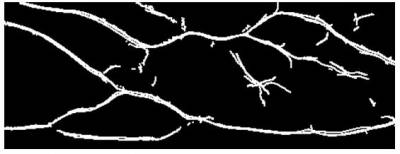Bio-Photonics
Biophotonics denotes a combination of biology and photonics, with photonics being the science of direct manipulation of photons, quantum units of light. Biophotonics has therefore become the established general term for all techniques that deal with the relation of biological material and photons. This refers to emission, detection, absorption, reflection, modification, and creation of radiation from living organisms and organic material. Recently our interest is to show blood vessel under ths skin using laser and near-infrared light and will be expanded to many research areas such as u-healthcare or BioMEMS technology.
Ongoing Project
Near-Infrared Imaging for Finger
To prevent information disclosure and illegal access, it is crucial to stop impersonation by others, and biometric identification is the solution. Vein-based identification systems are now attracting much attention thanks to their high identification accuracy compared to fingerprint-based systems. Compared to a fingerprint-based identification system, a vein-based system is immune to tampering, making it ideal for high-security environments. The vein pattern on the underside of the fingers is identified by image processing. By using the vein pattern inside the body, identification accuracy is outstanding. The reading section requires no contact, so the system causes no discomfort or unpleasantness. And there is no psychological barrier, unlike with fingerprinting systems. The finger vein-based identification system identifies a person by the pattern of veins inside the finger using a near-infrared ray, which is harmless to the human body, and then image-processing the results.
We developed the finger vein recognition system using near-infrared light for personal indentification. At near-infrared wavelenghts, hemoglobin has lower absorbance than at visible wavelength. So transmitting near-infrared light through a finger is suitable or acquisition of its vein pattern

<Schematics of finger vein acquisition device>
Finger vein pattern is originated from lower light absorbance characteristics of hemoglobin in red blood cell. In near infrared region, hemoglobin have lower absorbance than tissue. In result blood vessel in plenty of hemoglobin shows darker contrast than other tissues.
The proposed finger vein acquisition system uses near infrared laser as a light source to make line laser beam from spot laser beam. Laser line generator lens has fixed pan angle, and makes evenly distributed power profile along the line laser beam. The transmitted light through the finger is filtered by IR pass filter which prevent the interference from other light sources. Finally The CCD camera captures the finger vein image. In proposed system, the incident line laser barely diffract within small distance, 5~10 cm, so it enables high contrast vein image without direct contact between finger and sensor.
In the conventional setting, 850nm LED array was used to minimize the effect of wavelength difference. And same IR filter and CCD camera were used.

<Extracted Finger Vein Patterns>
To reduce data size, and perform easier post processing, only vein patterns are extracted from raw images. There are several methods for the vein pattern extraction, minutiae point detection, recursive line tracking methods, maximum curvature point calculation, etc… upper figure is the example of extracted finger vein which uptained by maximum curvature point calculation methods.



